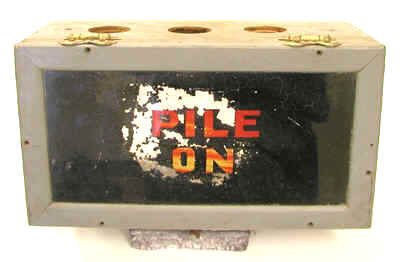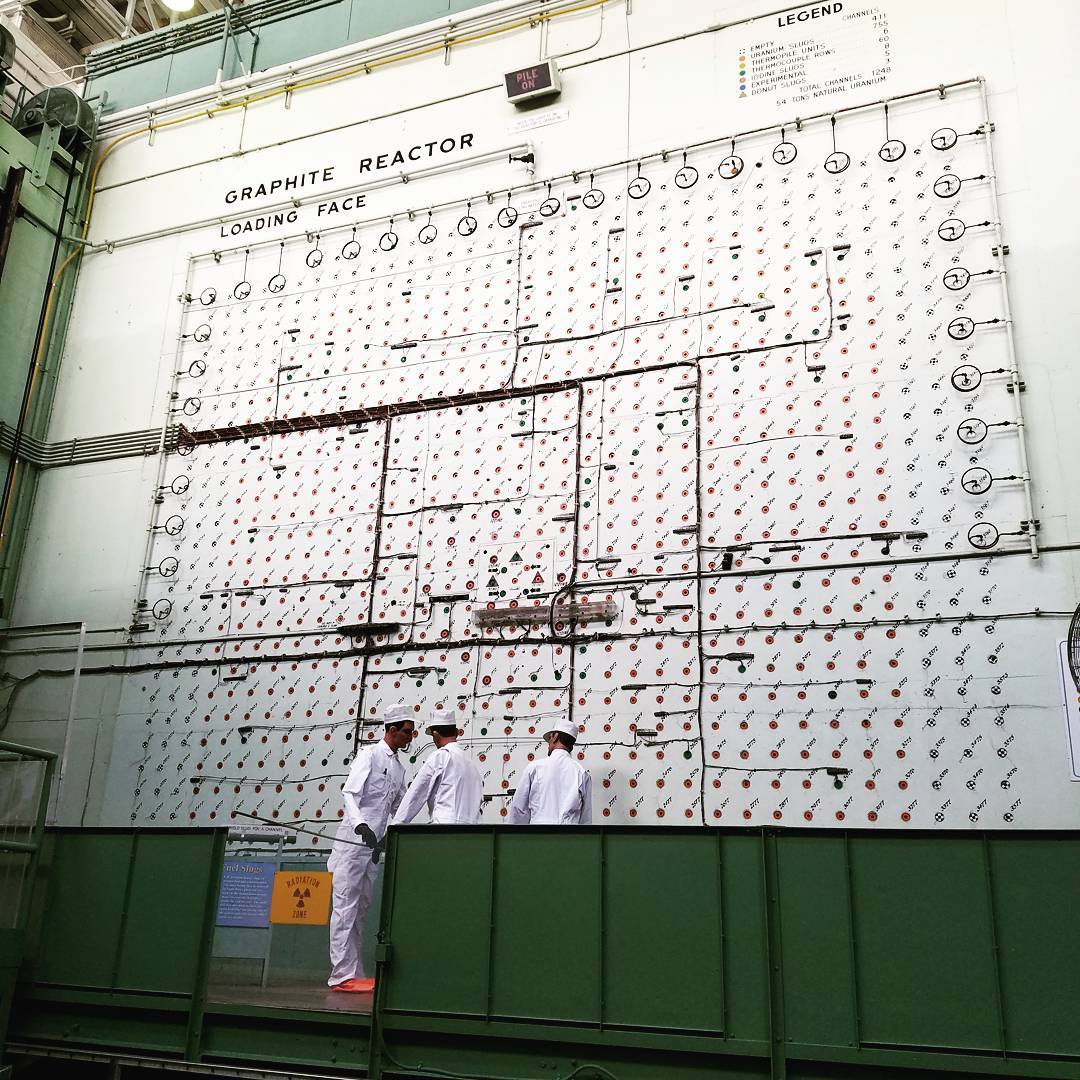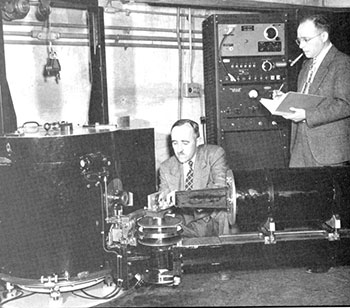Warning Light from ORNL Graphite Reactor

This PILE ON light came from the world’s first true operating reactor—the Graphite Reactor at Oak Ridge National Laboratory. The reactor, originally referred to as a pile, operated exactly twenty years, from November 4, 1943 - November 4, 1963.
The term pile referred to the fact that it was simply a big pile of graphite and uranium.
The original purpose of the graphite reactor was to produce plutonium.
After the war, the reactor became the world’s major source of radioisotopes for use in research, industry and medicine.

The photo shows the front face of the pile with a "Pile On" light near the top center.
The element promethium was discovered in material extracted from the graphite reactor by Charles Coryell, Jacob Marinsky and Larry Glendenin. Just as Prometheus stole fire from the gods, the element promethium was stolen from the fire of the reactor. It was Coryell's wife, Grace Mary, who proposed the idea for naming the element and she had something else in mind. As punishment for stealing the fire from Olympus, Zeus ordered Prometheus tied to a rock and had an eagle come to him each day and eat out his liver. Afterwards, his liver would grow back and Prometheus would have to face the same punishment the next day. Perhaps a price might also have to be paid playing with the fire of a reactor.
During the late 1940s, Ernest Wollan and Clifford Shull developed the technique of neutron diffraction analysis using the neutrons produced by the reactor. Shull was awarded the Nobel Prize in 1994 for this work. Unfortunately, it was too late for Ernest Wollan, the first person to use the title "Health Physicist." He died in the 1980s.
Donated by Oak Ridge National Laboratory, courtesy of Bill Alexander,

The photo shows Clifford Shull with the neutron scattering diffractometer.
